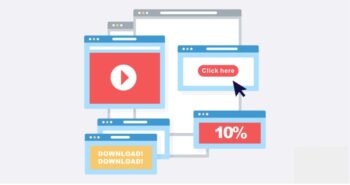Backlinks are the backbone of your site’s SEO strategy. In today’s competitive digital landscape, mastering the art of securing high-quality backlinks is essential for elevating your website’s visibility and authority. Ready to take your site to the next level? Let’s dive into the strategies that will help you secure those valuable links and boost your site’s performance.
Understanding Backlinks: Why They Matter
The Importance of Backlinks
Backlinks aren’t just about SEO; they’re about building trust and driving traffic. Here’s why they’re so crucial:
- SEO Benefits: Backlinks serve as endorsements from other websites, signaling to search engines that your content is valuable and trustworthy, leading to higher rankings.
- Referral Traffic: When users click on a backlink from another site, they land on your page—bringing in potential customers or readers directly to your content.
- Credibility: High-quality backlinks from reputable sites boost your website’s authority, making others more likely to link to or share your content.
Types of Backlinks: Quality Over Quantity
Not all backlinks are created equal. Here’s a quick overview of the types of backlinks and why they matter:
Below are examples of various types of backlinks using rel tags:
- DoFollow Backlink:htmlCopy code
<a href="https://example.com" rel="dofollow">Visit Example</a> - NoFollow Backlink:htmlCopy code
<a href="https://example.com" rel="nofollow">Visit Example</a> - UGC (User-Generated Content) Backlink:htmlCopy code
<a href="https://example.com" rel="ugc">Check out this user review</a>Used for links within user-generated content like comments or forum posts. - Sponsored Backlink:htmlCopy code
<a href="https://example.com" rel="sponsored">This is a sponsored link</a>Used for links that are part of paid advertising or sponsorships. - NoOpener Backlink:htmlCopy code
<a href="https://example.com" rel="noopener">Open Example in a new tab</a>Used to prevent the new page from being able to manipulate the original page that opened the link. - NoReferrer Backlink:htmlCopy code
<a href="https://example.com" rel="">Go to Example</a>Used to prevent the browser from sending the referrer information to the destination website. - Multiple Rel Attributes:htmlCopy code
<a href="https://example.com" rel="nofollow noopener">Check out Example</a>Combines multiplerelattributes for more specific behavior.
These examples illustrate how to use different rel tags in backlinks depending on the context and purpose of the link.
Focusing on DoFollow backlinks is key, but don’t ignore the potential benefits of NoFollow links, especially when they come from high-traffic sites.
Analyzing a website before creating backlinks
Analyzing a website before creating backlinks is crucial to ensure that the backlinks will be valuable and not harm your SEO efforts. Here’s a step-by-step guide to help you evaluate a website:
1. Check Domain Authority (DA)
- What to Look For: Higher DA generally indicates a more authoritative website.
- How to Check: Use tools like Moz’s Link Explorer, Ahrefs, or SEMrush to find the DA. Aim for websites with a DA similar to or higher than your own.
2. Assess Relevance
- What to Look For: The website’s content should be relevant to your niche or industry.
- How to Check: Review the website’s content categories and individual articles to ensure alignment with your site’s focus.
3. Examine Traffic Quality
- What to Look For: Websites with steady, organic traffic are more valuable.
- How to Check: Use tools like SimilarWeb or Ahrefs to estimate the website’s traffic and its sources. Focus on sites with organic traffic over paid or referral traffic.
4. Analyze Backlink Profile
- What to Look For: The site should have a healthy backlink profile with minimal spammy links.
- How to Check: Use tools like Ahrefs, Moz, or SEMrush to review the site’s backlink profile. Look for a good mix of DoFollow and NoFollow links from reputable sources.
5. Check for Spam Score
- What to Look For: A low spam score is preferable.
- How to Check: Tools like Moz provide a spam score. Avoid websites with a high spam score, as linking to them could negatively impact your SEO.
6. Review Site Content Quality
- What to Look For: High-quality, original content that engages its audience.
- How to Check: Browse several articles to evaluate the depth, originality, and overall quality of the content. Avoid sites that rely heavily on duplicate content or thin, low-value posts.
7. Inspect Website’s Design and User Experience
- What to Look For: A well-designed website with a good user experience (UX).
- How to Check: Navigate the site to assess its design, page load speed, mobile-friendliness, and ease of navigation. Good UX often correlates with higher user engagement and lower bounce rates.
8. Evaluate the Site’s Social Media Presence
- What to Look For: Active and engaged social media profiles.
- How to Check: Check the website’s social media profiles to see if they are active, with regular posts and a good level of engagement. This can be a sign of a strong, influential website.
9. Verify Indexing and Crawlability
- What to Look For: The website should be properly indexed by search engines and have no issues with crawlability.
- How to Check: Use Google’s site search (e.g.,
site:example.com) to see how many pages are indexed. Tools like Google Search Console can also be used to check for crawl errors.
10. Check Outbound Links
- What to Look For: The site should link out to reputable and relevant sources.
- How to Check: Browse through several articles to see where they link out. A site that links to low-quality or spammy sites might not be ideal for your backlink strategy.
11. Look for Engagement Metrics
- What to Look For: High levels of user engagement, such as comments, shares, and likes.
- How to Check: Observe the level of engagement on blog posts and social media. High engagement often indicates a strong and active audience.
12. Check for Potential Penalties
- What to Look For: Ensure the site hasn’t been penalized by search engines.
- How to Check: Tools like SEMrush can reveal any potential penalties. You can also check the site’s organic traffic history for any sudden drops that could indicate a penalty.
By following these steps, you can effectively analyze a website and determine whether it’s a good candidate for creating backlinks. The goal is to ensure that your backlinks are coming from reputable, relevant, and authoritative sources that will benefit your SEO efforts.
Proven Techniques to Secure Backlinks
1. Create High-Quality, Shareable Content
Content remains king in the world of backlinks. To earn them, you must create content that others find valuable and worth sharing. Consider producing:
- In-Depth Guides: Comprehensive, well-researched guides that offer actionable insights.
- Infographics: Visually appealing, easy-to-digest information that is highly shareable.
- Case Studies: Real-world examples that showcase your expertise and results.
- Expert Round-Ups: Collaborate with industry leaders to create authoritative content.
- Engaging Videos: Video content that captivates and informs can attract a broader audience and links.
2. Leverage Guest Blogging
Guest blogging is a tried-and-true method for earning backlinks. It involves writing content for other sites in your niche, with a link back to your site included. Here’s how to get started:
- Identify Opportunities: Look for websites in your niche that accept guest posts.
- Pitch Relevant Ideas: Tailor your article ideas to fit the site’s audience and guidelines.
- Craft High-Quality Content: Write compelling posts that provide value to the site’s readers while including a strategic backlink.
3. Target Resource Pages
Resource pages are gold mines for backlinks. These pages curate lists of valuable resources within a specific niche. To get your content featured:
- Search for Resource Pages: Use search terms like “top [niche] resources” or “[industry] tools” to find relevant pages.
- Reach Out: Contact the website owner, suggesting your content as a valuable addition to their list.
- Earn the Backlink: If accepted, your content will be featured alongside other reputable resources.
4. Utilize Broken Link Building
Broken link building is a powerful strategy where you identify broken links on other sites and offer your content as a replacement. Follow these steps:
- Find Broken Links: Use tools like Ahrefs or Broken Link Checker to locate broken links in your niche.
- Create or Identify Relevant Content: Ensure you have content that matches or improves upon the broken link.
- Reach Out: Notify the site owner of the broken link and suggest your content as a replacement.
5. Implement the Skyscraper Technique
The Skyscraper Technique involves finding popular content in your niche, creating something even better, and then reaching out to those who linked to the original. Here’s how:
- Research Popular Content: Use tools like BuzzSumo to find high-performing content.
- Create Superior Content: Build upon the original by adding more depth, updating information, or enhancing the design.
- Pitch Your Content: Contact sites that linked to the original content and present your improved version.
6. Maximize Social Media Sharing
Social media can amplify your content’s reach and attract backlinks organically. Here’s how to make the most of it:
- Share Strategically: Post your content on platforms where your target audience is most active.
- Engage with Influencers: Interact with industry leaders who might share or link to your content.
- Participate in Communities: Join niche-specific forums and groups, sharing your content where it’s relevant.
Frequently Asked Questions
Q: How many backlinks do I need to improve my site’s ranking?
A: There’s no set number. The impact of backlinks depends on their quality, relevance, and your site’s niche. Focus on building high-quality links consistently.
Q: How long does it take to see results from backlink building?
A: It can take several weeks to months. Search engines need time to discover and index new backlinks, so patience and persistence are key.
Q: Can I buy backlinks to save time?
A: Buying backlinks is risky and against Google’s Webmaster Guidelines. It can lead to penalties or even de-indexing. Stick to ethical, white-hat strategies to protect your site’s reputation.
Q: How do I know if a backlink is high-quality?
A: A high-quality backlink typically comes from a reputable, authoritative site that is relevant to your niche. Look for backlinks from websites with strong domain authority, low spam scores, and a good reputation in your industry. Additionally, the context of the link matters—links embedded naturally within related content are generally more valuable.
Q: What are the risks of acquiring backlinks too quickly?
A: Acquiring backlinks too quickly, especially if they come from low-quality or irrelevant sites, can raise red flags with search engines like Google. This might lead to penalties, such as reduced rankings or even de-indexing. It’s important to build backlinks organically over time and focus on quality over quantity.
Q: Can internal linking impact my backlink strategy?
A: Yes, internal linking plays a crucial role in your overall SEO strategy. While external backlinks are important for bringing in referral traffic and boosting credibility, internal links help distribute the authority across your site, improve user experience, and ensure search engines can easily navigate and index your content.
Q: Should I focus more on backlinks or content creation?
A: Both are equally important and should work hand-in-hand. High-quality content attracts backlinks, and strong backlinks help amplify the visibility of your content. By consistently producing valuable content, you increase the chances of earning natural backlinks, which in turn supports your overall SEO strategy.
Q: How often should I engage in guest posting?
A: The frequency of guest posting depends on your resources and goals. Regular guest posting (e.g., once or twice a month) can be highly effective in building backlinks and establishing your authority in your niche. However, it’s crucial to focus on quality rather than quantity. Ensure that each guest post offers value to the host site’s audience and aligns with your brand.
Conclusion: Consistency is Key
Building a robust backlink profile is a marathon, not a sprint. By consistently applying these strategies and focusing on high-quality, ethical link-building, you’ll gradually see improvements in your site’s SEO, referral traffic, and overall credibility. Remember, success lies in patience, persistence, and a commitment to producing valuable content. Happy linking!




